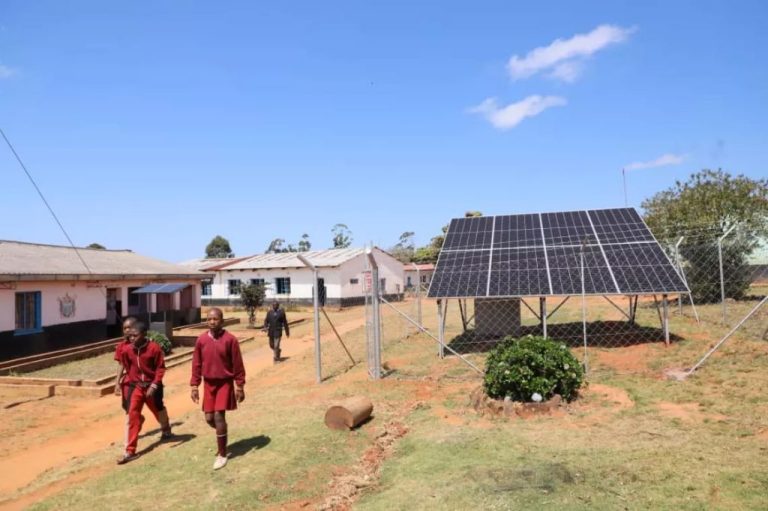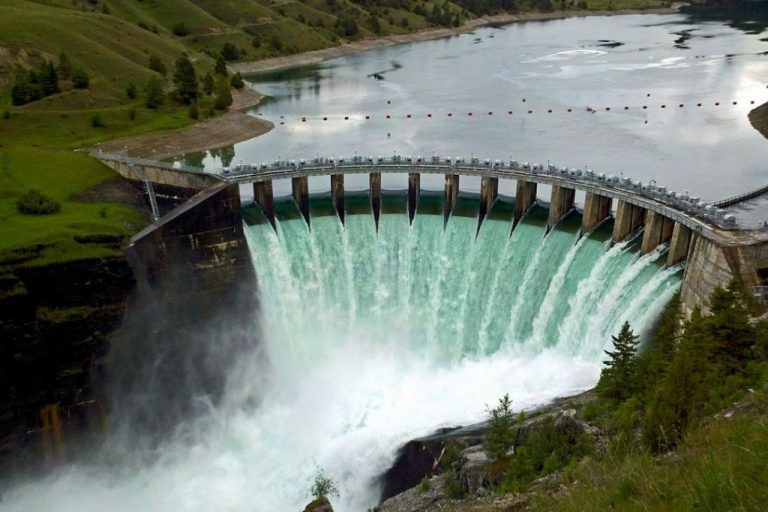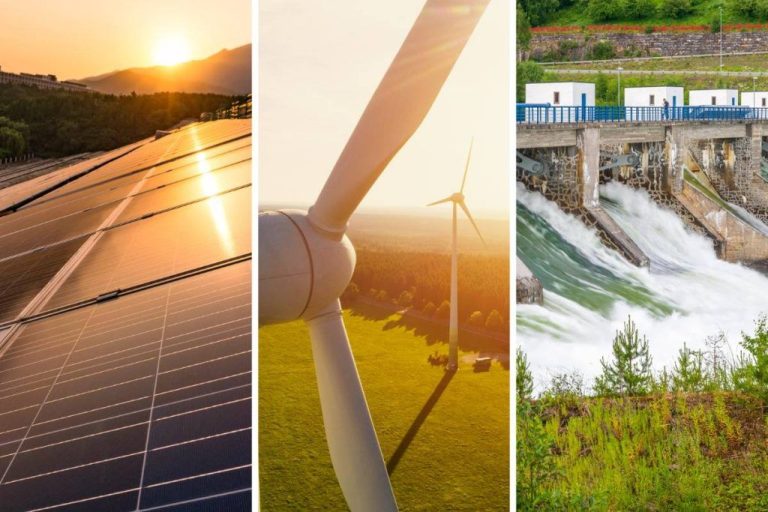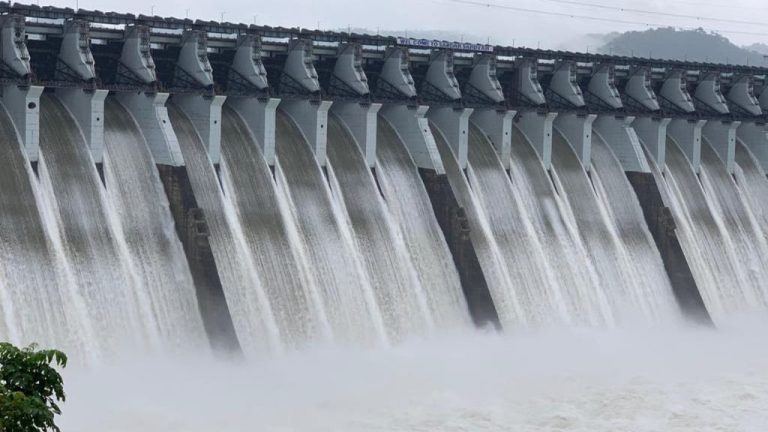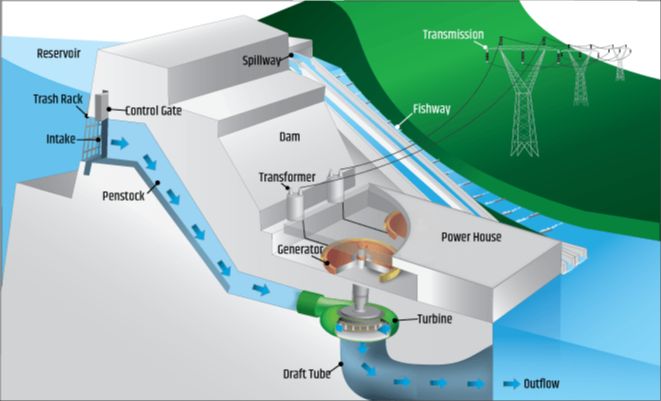What Are The 5 Top Hydropower States In The Us?
Hydropower has a long history in the United States as a renewable energy source. The first U.S. hydropower plant opened on the Fox River in Wisconsin in 1882. Today, hydropower is the leading renewable source for electricity generation in the country, accounting for over 6% of total U.S. electricity generation and 45% of electricity generation from renewables. Hydropower capacity has grown steadily over the past decades to a total of 80,195 megawatts as of 2020.
The top five hydropower producing states generate over half of the country’s hydroelectricity. These states have ideal geography, precipitation levels, and infrastructure to support abundant hydropower facilities. Washington state ranks first in hydroelectric generation, followed by Oregon, California, New York, and Alabama. These states have major rivers with multiple dams and power plants that drive their robust hydropower output.
#1 – Washington
According to https://www.eia.gov/state/analysis.php?sid=WA, in 2022 Washington had over 7,230 megawatts (MW) of total hydroelectric capacity, the most of any state in the nation. Major dams and power plants in Washington include the Grand Coulee Dam, Chief Joseph Dam, and Wells Dam, which together produce over 20% of the total hydroelectricity generated in the United States. Hydroelectric power accounted for 67% of Washington’s total electricity net generation in 2022. Due to its vast hydro resources from the Columbia River system and other waterways, Washington leads the nation in electricity generation from renewable energy.
#2 – Oregon
Oregon has the second highest hydroelectric power capacity in the United States with around 8,923 megawatts (MW) of installed capacity as of 2021 according to the State of Oregon. Hydroelectric dams generate over 50% of Oregon’s net electricity generation. Some of the major hydroelectric facilities in Oregon include:
- Bonneville Dam – 1,093 MW installed capacity
- The Dalles Dam – 1,820 MW installed capacity
- John Day Dam – 2,160 MW installed capacity
In 2020, Oregon generated 31,920,643 megawatt hours (MWh) from hydroelectric sources, accounting for 51% of the state’s total electricity generation according to the U.S. Energy Information Administration. With abundant hydro resources from the Columbia and Snake rivers, Oregon relies heavily on hydropower to meet its renewable energy goals and provide reliable baseload electricity generation.
#3 – California
California ranks third in hydroelectric generation capacity in the United States with 14,742 megawatts as of 2018. The state has several large hydroelectric plants and dams including the Oroville Dam, Shasta Dam, and Hoover Dam. However, hydroelectric generation has been declining in recent years due to severe drought conditions. According to the Energy Information Administration, hydroelectric generation fell from 33.0 million MWh in 2011 to 14.8 million MWh in 2015, about a 55% decrease. Despite this drop, hydroelectric power still accounted for approximately 15% of California’s in-state generation in 2018.
#4 – New York
New York has more than a century-old history of electricity generation from hydropower. Some of the state’s largest hydroelectric dams include the Niagara gorge facilities, which have a combined generating capacity of 2,721 megawatts, as well as the Robert Moses Niagara Power Plant, which generates 2,515 megawatts. Together, these facilities can produce enough electricity to power over 12 million homes.
Some other major hydroelectric facilities in New York include the St. Lawrence-Franklin D. Roosevelt Power Project (900 MW), Blenheim-Gilboa Pumped Storage Power Project (1,158 MW), and the Lewiston Pump Generating Plant (1,045 MW) (NYPA).
Currently, New York has approximately 4,693 megawatts of hydroelectric capacity, which accounts for about 20% of the state’s net generation (EIA). Hydropower plays an important role in New York’s renewable energy portfolio, along with wind and solar power. There are over 60 hydropower facilities operating statewide.
#5 – Alabama
Alabama has over 2,000 megawatts of installed hydroelectric capacity, ranking it 5th in the nation for hydroelectric generation EIA 2022. The state gets about 70% of its renewable electricity from hydropower Alabama Power 2022. Alabama Power owns and operates multiple hydroelectric dams and power plants across the state.
Some of the major hydroelectric facilities in Alabama include:
– Harris Dam (648 MW) on the Tallapoosa River
– Martin Dam (169 MW) on the Tallapoosa River
– Jordan Dam (172 MW) on the Coosa River
The reservoirs created by these dams provide over 157,000 acres of water that is used for both electricity generation and cooling Alabama’s power plants. Hydropower plays an essential role in Alabama’s renewable energy portfolio and electricity generation Alabama Power.
History of Hydropower
Hydropower has been utilized in the United States for over a century. One of the first hydroelectric power plants was built on the Fox River in Appleton, Wisconsin in 1882 [1]. In the early 20th century, massive hydroelectric projects such as the Hoover Dam, Grand Coulee Dam and others helped spur tremendous growth and development in the Western United States. By 1940, nearly 40% of U.S. electricity came from hydropower sources [2].
Growth in hydropower capacity slowed in the latter half of the 20th century as suitable large dam sites became more scarce. However, small hydro and “low-impact” hydro projects have seen a resurgence of interest in recent years as a renewable energy source. Overall, hydropower still provides about 7% of total U.S. electricity generation today.
Environmental Impacts
While hydropower is a renewable energy source, large hydropower facilities can have significant environmental impacts by changing the environment and affecting land use, homes, and natural habitats. Flooding land to create a reservoir destroys forests, wildlife habitats, agricultural land, and scenic lands. It also displaces human populations. According to the U.S. Geological Survey, the Three Gorges Dam in China flooded 13 cities, 140 towns, and more than 1,350 villages, displacing over 1 million people.
Hydropower dams affect fish migration and survival. The turbines in hydropower dams can kill or injure fish that pass through them. Dams also alter natural water temperatures and flow rates, affecting habitat and spawning cues for fish. Many dams in the U.S. now include fish ladders to help mitigate this issue. According to the U.S. Energy Information Administration, new technologies allow for generating power through dams in ways that help protect fish, such as more fish-friendly turbine designs.
Reservoirs can cover important natural areas, agricultural land, and scenic lands. They may also change water quality by increasing water temperature and evaporation rates. Hydropower facilities can impact water quality through low dissolved oxygen levels and higher algae growth caused by slower moving water. Strategies are being developed to mitigate reservoir impacts, such as varying water levels to establish natural vegetation along the shoreline. The U.S. Department of Energy states that by coordinating releases to meet irrigation and navigation needs, hydropower operations can positively influence water quality.
Future Outlook
The future of hydropower in the United States looks promising but faces some challenges. According to the Hydropower Vision Report from the Department of Energy, there is potential for new hydropower projects across the country. Upgrades and optimizations at existing facilities could add up to 12 GW of new capacity by 2050. However, hydropower will face increasing competition from other renewable sources like wind and solar. Hydropower will need to improve its flexibility and integrate storage technologies to complement intermittent renewables.
Climate change also poses challenges for hydropower in the coming decades. Changes in precipitation patterns and water availability could impact generation capacity. More extreme weather events may increase sedimentation and debris which can damage equipment. Overall, the report forecasts growth in hydropower capacity of up to nearly 150 GW by 2050. But realizing this potential will require surmounting the obstacles posed by competing renewables and climate change.
Conclusion
In summary, the top five hydropower states in the United States are Washington, Oregon, California, New York, and Alabama. Washington state generates the most hydroelectricity, accounting for over 25% of U.S. hydropower generation. It has massive hydro projects like the Grand Coulee Dam. Oregon comes in second, thanks to its Columbia River system and dams like Bonneville. For being the most populous state, California comes in third for hydro generation from places like Hoover Dam. New York follows next with its series of hydro plants and dams along the Niagara River and St. Lawrence Seaway. Rounding out the top five is Alabama, which powers cities like Birmingham from dams built along its rivers by the TVA. Together, these top five states generate over 60% of all hydroelectricity in the country. With abundant water resources and infrastructure, they are positioned to continue leading U.S. hydropower production into the future.

